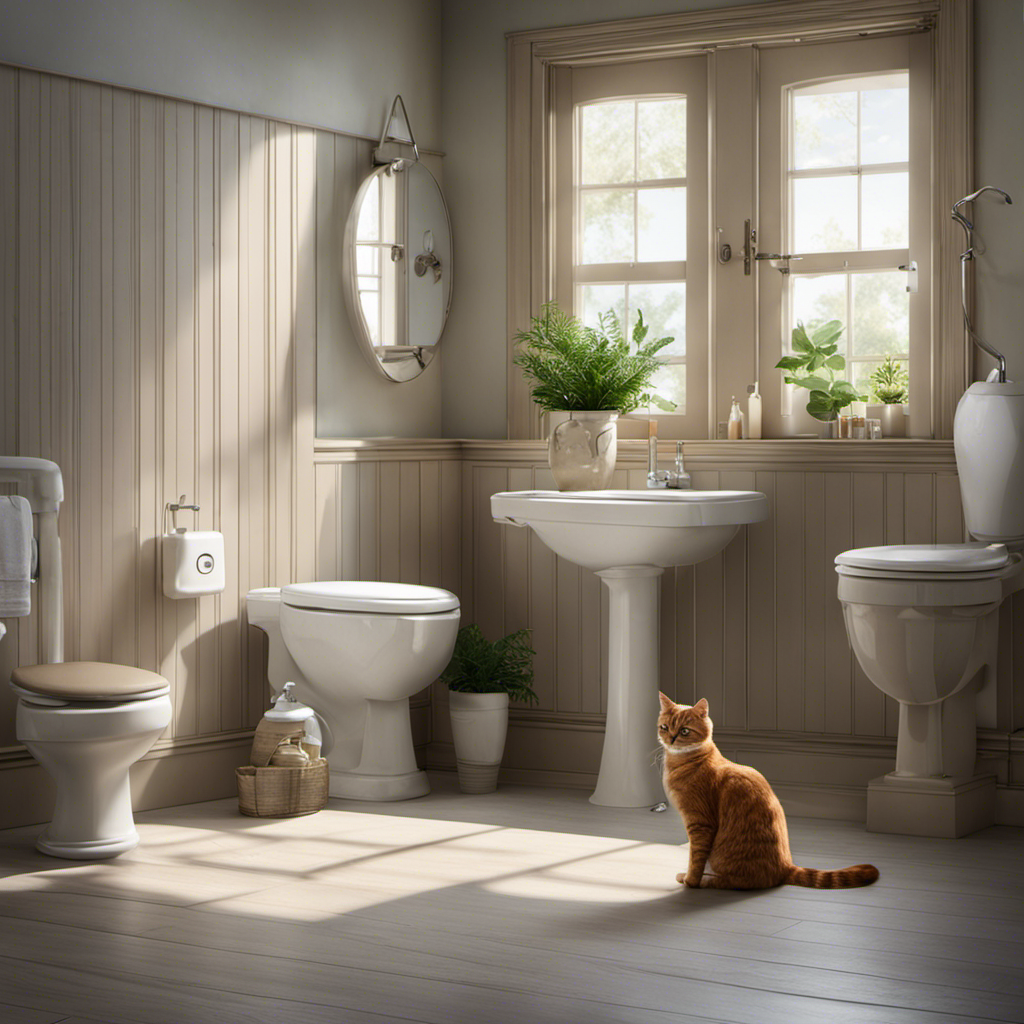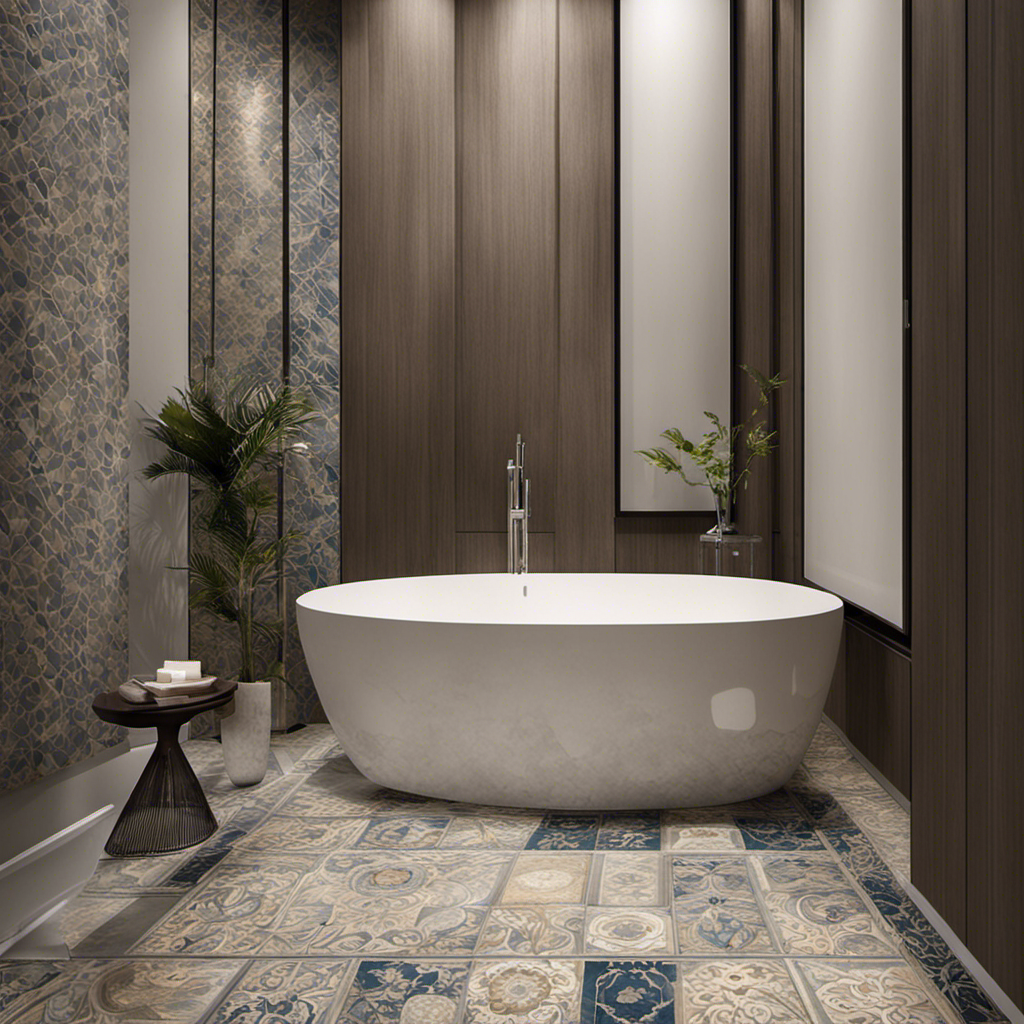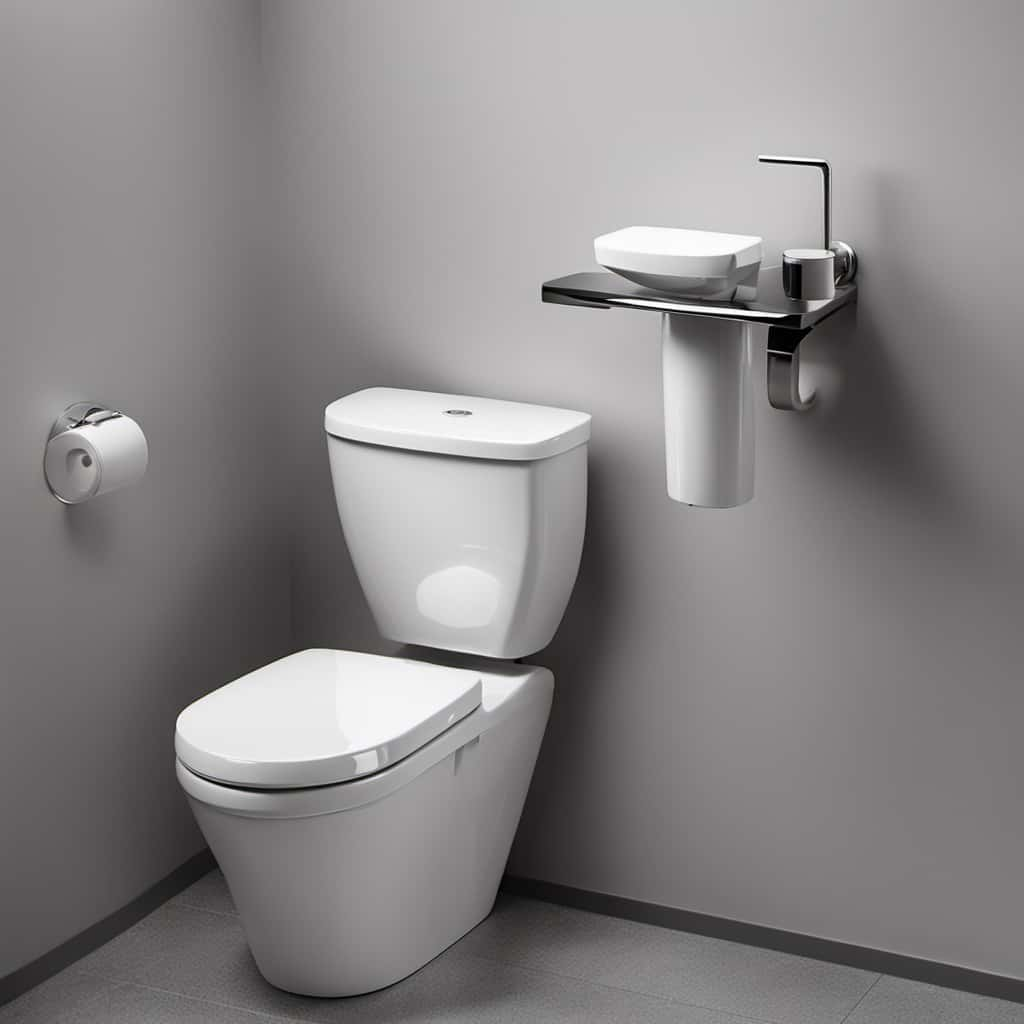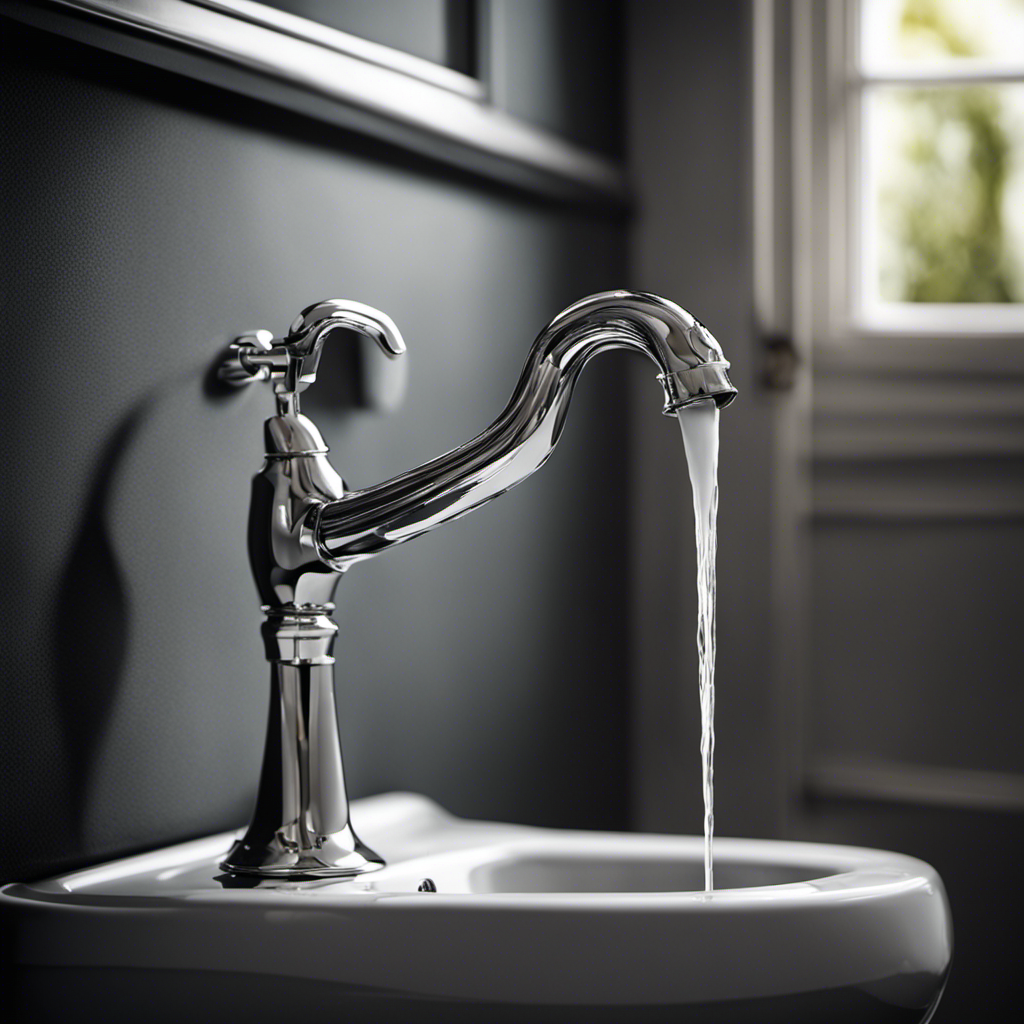I never thought I’d see the day when my feline companion would be using the same restroom as me. But here we are, embarking on the journey of teaching a cat to use the toilet.
It may sound like a far-fetched idea, but trust me, it’s possible. In this article, I’ll guide you through the process step by step, sharing tips and tricks to make this seemingly impossible task a reality.
So, let’s get started and turn your cat into a toilet aficionado!
Key Takeaways
- Toilet training eliminates the need for a litter box and saves money on litter expenses.
- Consistency and positive reinforcement are key to successfully teach a cat to use the toilet.
- Creating a safe environment and introducing gradual changes helps the cat adjust to the new routine.
- Establishing a routine and providing a stable environment with regular feeding and play schedules helps in toilet training.
Understanding the Benefits of Toilet Training for Cats
You’ll be amazed at the benefits of teaching your cat to use the toilet! Toilet training for cats offers several advantages, making it a worthwhile endeavor.
First and foremost, it eliminates the need for a litter box, which means no more mess or odor in your home. Additionally, teaching your cat to use the toilet can save you money on litter expenses. It is also more hygienic as there is no direct contact with waste.
However, it is important to note that toilet training cats can be a challenging task. Cats are naturally inclined to use litter boxes, so transitioning them to a toilet may take time and patience. Consistency and positive reinforcement are key.
It is crucial to introduce the training gradually, allowing your cat to adjust to the new routine. By understanding the benefits and being prepared for the challenges, you can successfully toilet train your cat.
Preparing Your Home for Toilet Training
Toilet training supplies are essential when preparing your home for cat toilet training. Items such as litter boxes, flushable litter, and training seats can help facilitate the training process.
Creating a safe environment is also crucial, ensuring that the toilet area is easily accessible and free from any potential hazards.
Toilet Training Supplies
Once you’ve gathered all the necessary supplies, it’s time to start toilet training your cat. Toilet training techniques can vary, but the key is to be patient and consistent.
One of the first steps is to introduce your cat to the litter box alternatives. These alternatives include the toilet seat training kits, which consist of a tray that fits over the toilet seat and gradually narrows over time, allowing your cat to transition from the litter box to the toilet.
Another option is the litter kwitter, a multi-step training system that replaces the litter box with a series of rings that fit over the toilet bowl. These rings gradually get smaller, guiding your cat to eliminate directly into the toilet.
Whichever alternative you choose, remember to praise and reward your cat for using the toilet successfully.
Creating a Safe Environment
When creating a safe environment for your furry friend, it’s important to remove any potential hazards. Cats are curious creatures, so it’s crucial to ensure their surroundings are free from any dangers.
Start by identifying and eliminating any toxic plants, chemicals, or small objects that your cat could swallow. Secure loose wires and cords to prevent your cat from chewing on them.
Additionally, create a positive association with the designated toilet area by placing treats or toys nearby. This will help your cat associate the area with something positive.
Introduce gradual changes by gradually moving the litter box closer to the toilet over time. This will help your cat adjust to the new location without feeling overwhelmed.
Establishing a Routine
Establishing a routine for your furry friend can help promote a sense of stability and security. Cats, known for their independent nature, thrive on consistency. By establishing a consistent routine, you are building trust and providing a stable environment for your cat.
Start by setting a regular feeding schedule. Cats are creatures of habit and knowing when to expect their meals will help establish trust.
Additionally, allocate specific times for play and exercise. Cats need mental and physical stimulation, and a consistent playtime routine will ensure they get the attention they need.
Choosing the Right Toilet Training Method for Your Cat
When it comes to choosing the right toilet training method for your cat, there are several factors to consider.
First, it’s important to weigh the pros and cons of each method, such as the level of difficulty, effectiveness, and potential stress on your cat.
Second, cat personality plays a crucial role in determining which method will work best, as some cats may be more receptive to certain techniques than others.
Lastly, understanding the training timeline and progress is essential, as it helps set realistic expectations and allows for adjustments along the way.
Method Comparison: Pros/Cons
One popular method for teaching a cat to use the toilet is the gradual transition method, but it has its pros and cons. This method involves gradually moving the litter box closer to the toilet over time until it is eventually placed directly on top. The idea is that the cat will become accustomed to using the toilet as its new litter box.
Here is a comparison of the pros and cons of the gradual transition method:
| Pros | Cons |
|---|---|
| Higher success rates | Requires patience |
| Less stressful for cat | Takes longer to train |
| Eliminates need for litter box | Not suitable for all cats |
While the gradual transition method can have higher success rates and be less stressful for cats, it does require patience and may take longer to train. Additionally, it may not be suitable for all cats. Considering these factors, it is important to take into account your cat’s personality when deciding on a toilet training method.
Cat Personality Considerations
Consider your furry friend’s unique personality traits when determining the best method for transitioning them to using the toilet. Cats have distinct behavior patterns and preferences, so tailoring the training techniques to their individual needs is crucial for success.
Here are four factors to consider when working with your cat’s personality:
-
Confidence level: Some cats are naturally more confident and adaptable, making them more open to new experiences like using the toilet. Others may be more cautious and require a slower, gradual approach.
-
Motivation: Understanding what motivates your cat is key to successful training. Whether it’s treats, praise, or playtime, find what gets them excited and use it as a reward during the training process.
-
Independence: Cats are known for their independent nature. Take this into account when choosing a training method. Some cats may prefer a gradual transition with litter box alternatives, while others may be more amenable to direct training on the toilet.
-
Patience: Training a cat requires patience and consistency. Be prepared for setbacks and take the time to understand your cat’s behavior and adjust your approach accordingly.
Training Timeline and Progress
Now that we’ve considered the personality of our feline friends, let’s dive into the training timeline and tracking progress.
Teaching a cat to use the toilet requires patience and consistency. The training techniques involve gradually transitioning your cat from a litter box to a specially designed toilet training system. It’s important to take it slow and not rush the process, as each cat learns at their own pace.
Tracking progress is essential to ensure your cat is adapting well to the new routine. Keep a log of their bathroom habits and note any accidents or setbacks. This will help you identify areas where your cat might need additional support or where adjustments to the training plan may be necessary.
With a solid understanding of training techniques and a system for tracking progress in place, we can now move on to the step-by-step guide to introducing your cat to the toilet.
Step-by-Step Guide to Introducing Your Cat to the Toilet
To start teaching your cat to use the toilet, it’s important to gradually introduce them to the new environment by placing their litter box near the toilet. Here is a step-by-step guide to help you with the process:
-
Familiarize your cat with the litter box: Start by placing the litter box near the toilet and allow your cat to use it comfortably.
-
Elevate the litter box: Slowly raise the litter box, using sturdy objects, such as books or wooden blocks, until it reaches the same height as the toilet seat.
-
Transition to a litter box on the toilet seat: Replace the regular litter box with a litter box that fits over the toilet seat, gradually reducing the amount of litter used.
-
Remove the litter box: Finally, remove the litter box completely and encourage your cat to use the toilet on their own.
Remember to use positive reinforcement methods, such as treats and praise, to reward your cat’s progress. With patience and consistency, your furry friend will soon become a toilet-trained superstar!
Overcoming Common Challenges in Toilet Training Cats
One common challenge in training cats to use the toilet is getting them to feel comfortable on the elevated litter box. Cats are creatures of habit and may be hesitant to use a new, unfamiliar surface. To overcome this challenge, there are a few common mistakes to avoid and alternative methods to try.
One mistake is rushing the process. It’s important to give your cat time to adjust to each step of the training, including the elevated litter box. Another mistake is not providing enough encouragement and rewards. Positive reinforcement, such as treats or praise, can help your cat associate using the toilet with a positive experience.
As an alternative method, you can try placing a smaller, gradually elevated litter box on top of the toilet seat. This allows your cat to gradually get used to the height and feel more secure. Additionally, using a litter box attractant or placing familiar scents near the elevated litter box can also help your cat feel more comfortable.
| Common Mistakes | Alternative Methods |
|---|---|
| Rushing the training process | Gradually elevating the litter box |
| Lack of encouragement and rewards | Positive reinforcement with treats or praise |
| Not addressing your cat’s comfort | Using a litter box attractant or familiar scents |
Troubleshooting Tips for Successful Toilet Training
A helpful tip for troubleshooting successful toilet training with cats is to ensure the litter box is easily accessible.
Here are some additional troubleshooting tips to overcome common challenges in toilet training:
-
Gradually transition from the litter box to the toilet by placing a shallow litter tray on top of the toilet seat. Slowly decrease the amount of litter in the tray until your cat is comfortable using the toilet without any litter.
-
Use positive reinforcement such as treats and praise to encourage your cat’s progress. Reward them every time they successfully use the toilet.
-
If your cat is reluctant to use the toilet, try using a toilet training aid like a special litter tray that fits inside the toilet bowl. This can help them feel more secure and confident.
-
Be patient and consistent with your training. Cats are creatures of habit, so it may take some time for them to fully adjust to using the toilet. Stay calm and persistent, and soon your cat will be a toilet-trained pro.
Maintaining Your Cat’s Toilet Training Habits
When maintaining your cat’s toilet training habits, it’s important to consistently reinforce positive behavior. Positive reinforcement is a crucial aspect of cat toilet training as it helps to encourage and reward the desired behavior. Here are some tips to help prevent accidents during the toilet training process:
| Importance of Positive Reinforcement | Tips for Preventing Accidents |
|---|---|
| – Cats respond well to positive reinforcement such as treats and praise. | – Gradually transition your cat from litter box to toilet seat. |
| – Use a clicker or verbal cue to associate the desired behavior with a reward. | – Maintain a consistent toilet training schedule for your cat. |
| – Be patient and give your cat time to adjust to the new toilet training routine. | – Keep the litter box accessible during the training period. |
Conclusion
In conclusion, toilet training your cat can be a rewarding and beneficial experience for both you and your feline friend. By following the step-by-step guide and troubleshooting tips provided, you can successfully teach your cat to use the toilet.
Remember the old saying, ‘Practice makes perfect,’ and be patient with your furry companion as they learn this new skill. With time and consistency, your cat will become a pro at using the toilet, eliminating the need for a litter box and creating a cleaner and more convenient environment for everyone.
Happy training!










